Working with SnakeGrid
Chris Gibbons, Geomatics and Monitoring, Leica Geosystems

SNAKEGRID was developed by Dr Jonathan Iliffe of University College London in partnership with Network Rail to solve the continuous grid system or low distortion problem along the West Coast Main Line between London Euston and Glasgow Central. Since then, it has become the standard coordinate system method used on Britain’s railways for infrastructure renewals and builds.
Why SnakeGrid?
Before going further let’s look in more detail, why the SnakeGrid concept was originally developed. Engineering projects are constructed using a reference grid that uses an easily understood localised XYZ (ENZ) coordinate system. This means that any measurement observations using GNSS sensors must be converted from the global coordinate frame that they are measured on for them to have some meaning on site.
On a small site by area of up to 10x10km at most this is not an issue as the coordinate system used can assume a flat earth methodology (Figure 1). A localisation of an origin point will be a tangent point on the ground with a realisation of a small area grid that assumes no deviation for the flat surface to the true surface of the earth. This means that over that small area any scaling will be negligible.
For larger projects, particularly long linear projects such as roads, pipelines and railways there needs to be a projection element introduced into the coordinate system. This will introduce a scaling into the coordinate system as the route diverges from the meridian of the projection.
A consequence of the scaling there will be a mismatch between the coordinates derived from the GNSS observations and any terrestrial observations such as those taken with a total station. The classic example of this is the OSGB36 National Grid with differences of up to 400mm per kilometre in parts of the country.
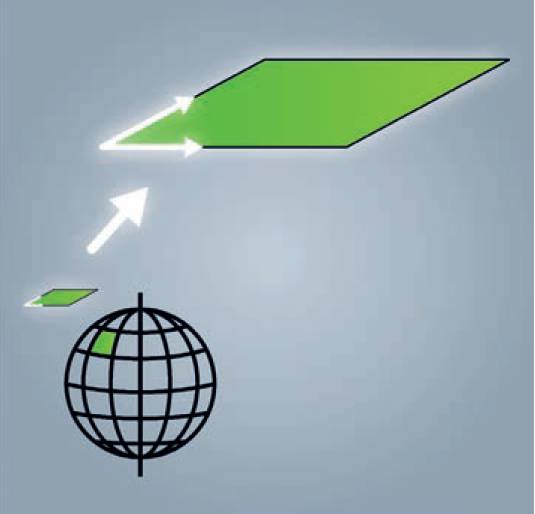
Figure 1: Flat earth methodology. |
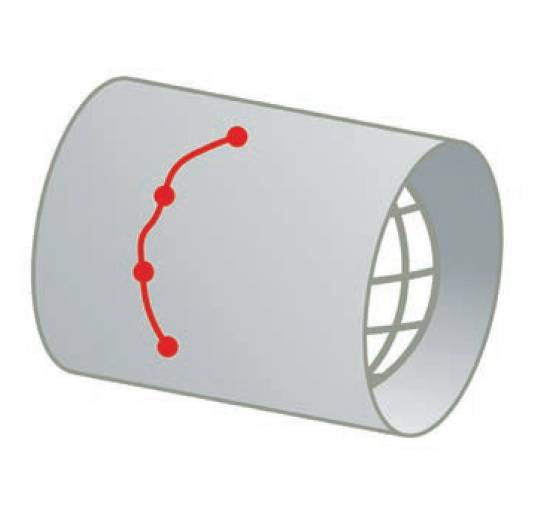
Figure 2: Transverse Mercator projection. |

Figure 3: Lambert Conformal Conical projection. |
Typically, Transverse Mercator or Lambert Conformal Conical projections (Figures 2 and 3) are used. These are fine if the project alignment runs in a straight line, north to south or west to east as the meridian of the projection can be set to follow the route – meaning that the scale factor distortion close to 0ppm can be used along the meridian that closely follows the route.
Also, any height changes along the route too that will affect the scale factor need to be considered.
If the route trends along an alignment that is away from north to south or east to west, then an option that has been used in the past is to create a series of grids that overlap (Figure 4). Within each local grid, the scale distortion is close to 0ppm. However, the issue with this is that a single location along a route will have different coordinates on the adjacent grids. These situations beg the question, do you want a continuous grid system or low distortion?
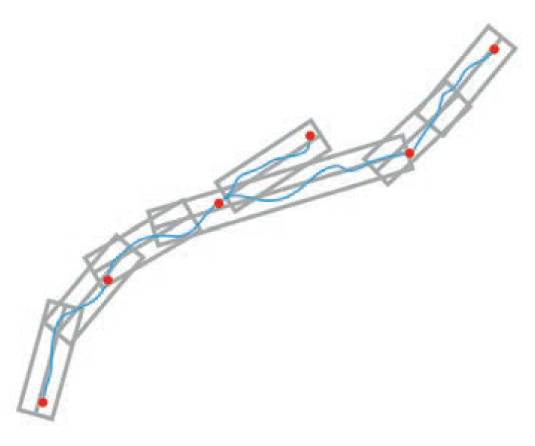
Figure 4: Creating a series of grids that overlap. |
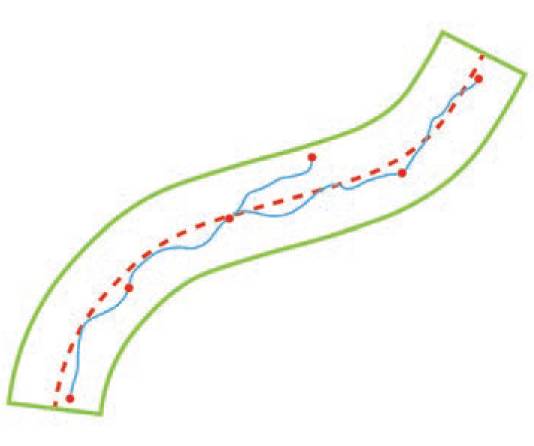
Figure 5: Generating a trend line of zero distortion that follows the route of a long and linear project. |
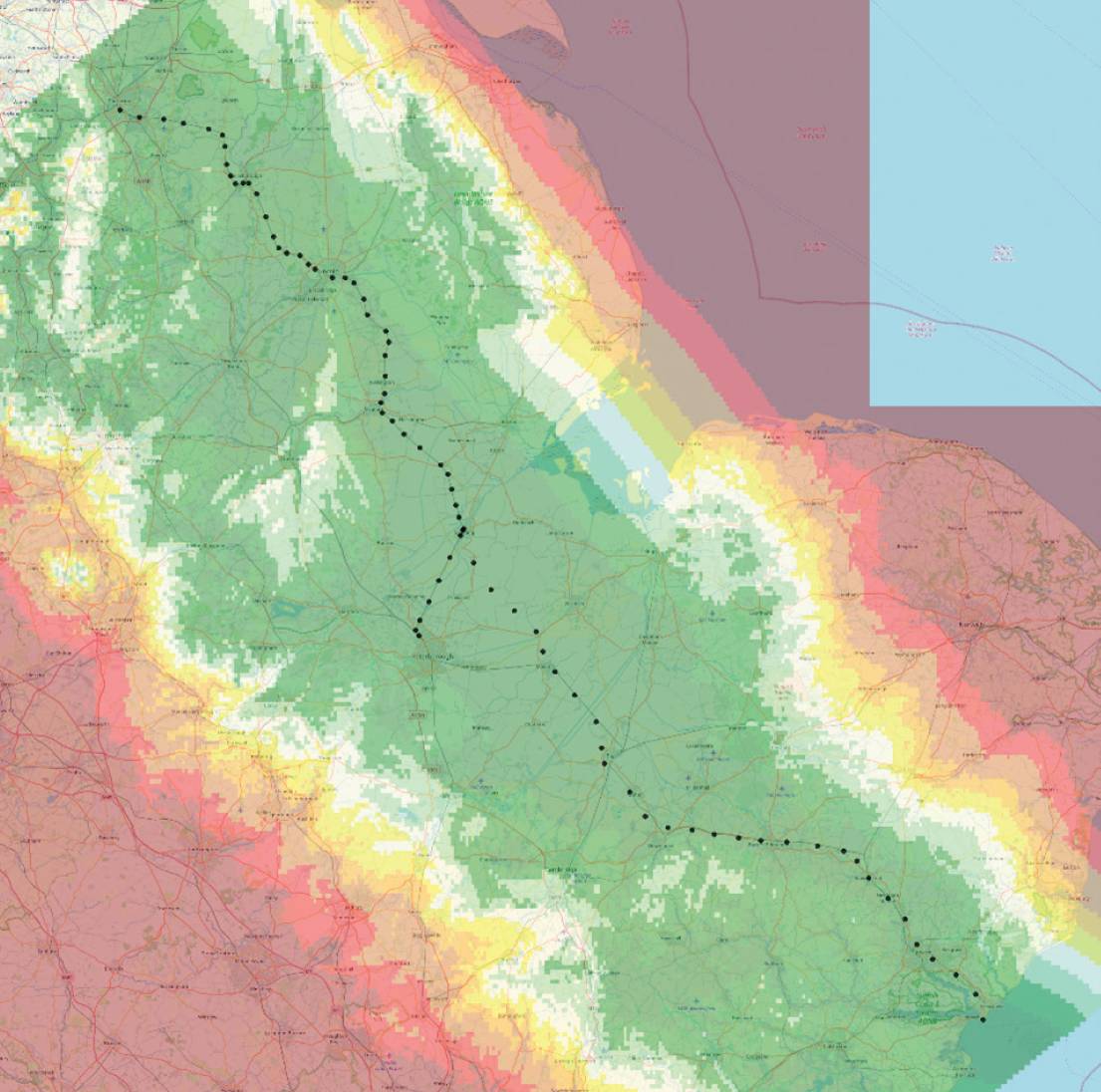
Figure 6: Here is an example of the route from Doncaster to Felixstowe (DSF09). This route is approximately 300km in length and conforms to this requirement along the whole route.
What is SnakeGrid?
SnakeGrid resolves the dilemma of do you want a continuous grid system or low distortion? It offers both by generating a trend line of zero distortion that follows the route of a long and linear project (Figure 5).
Further to this, at places where major routes intersect there is a zone of common coordinates so that the routes can merge seamlessly.Not only does the trend line follow the route in plan but it follows also in height. Therefore, at any point along the route you will have a ppm scale value that equates to just a few millimetres. The information to carry out the conversion is held in a parameter file that can then be used to transform coordinates from ETRS89 latitude and longitude values into the east and north values of the project coordinate system.
Originally this was done as batch files of reduced latitude, longitude and height coordinates in a specially created convertor called SnakeGrid Pointwise.
Typically, the conversion of coordinates will give scale distortion values of less than 20ppm within a corridor, several kilometres wide, along the entirety of the project route (Figure 6).
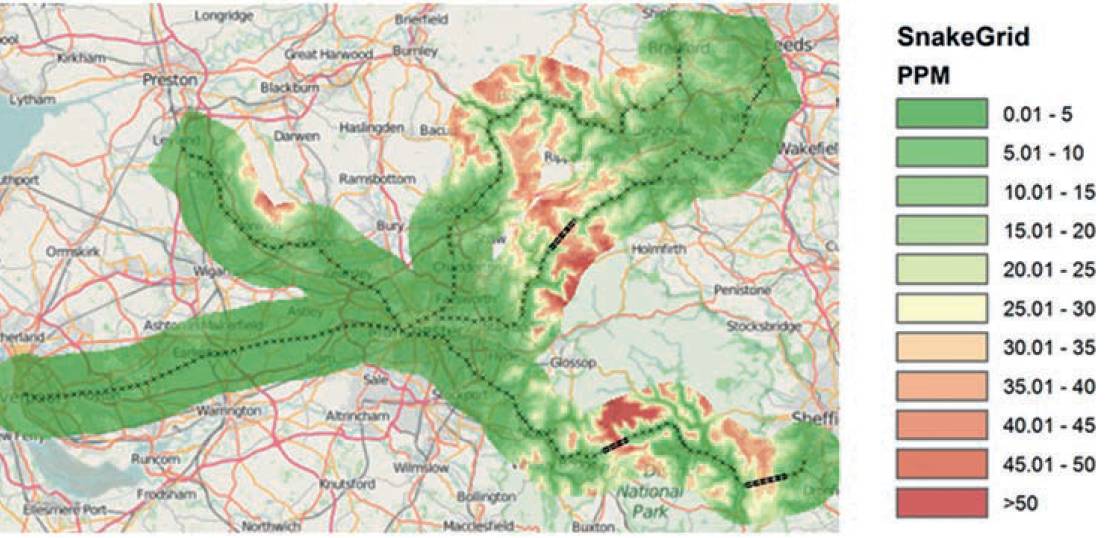
Figure 7: The Northern Hub
Further to this, at places where major routes intersect there is a zone of common coordinates so that the routes can merge seamlessly. An example of this is the Northern Hub (Figure 7).
The TransPennine route from Liverpool to Leeds and Bradford intersects with both the West and East Coast mainlines and has further off shoot lines such as Manchester to Euxton Junction and Manchester to Dore Junction have been merged into one continuous grid system that has a maximum scale distortion value of 10.4ppm despite covering most of the north of England.
Where each individual SnakeGrid meets, a zone around the junction exists in which the same point will agree within 1-2 mm despite being on different SnakeGrid. Through the high Pennines the ppm values around the narrow track corridors remain low because the SnakeGrid follows the elevation of the railway.
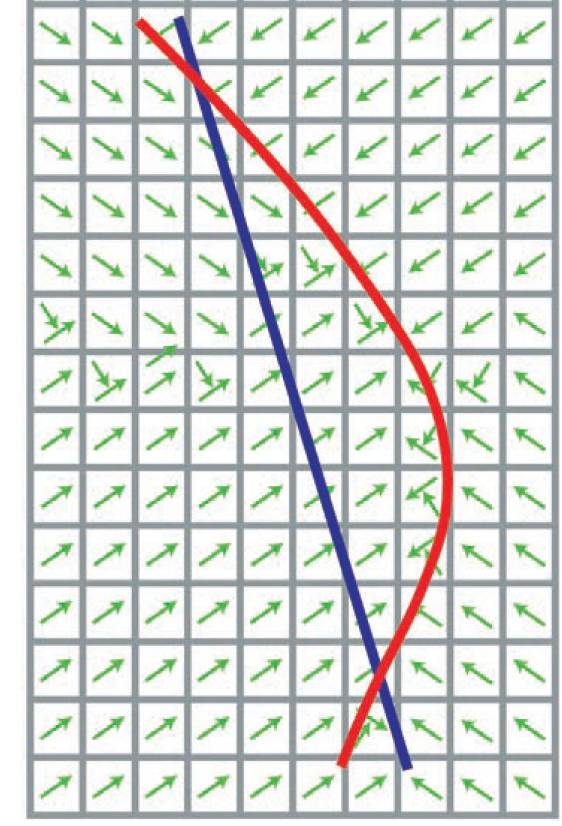
Figure 8: The red line represents the trend line of the SnakeGrid following the project route. The blue line represents the central meridian of the RSO projection.
Implementation of SnakeGrid
The implementation of a SnakeGrid coordinate system provides significant benefits to long linear projects. SnakeGrid is supported across the full range of Leica Geosystems sensors and software.
Considering the wide range of products that require a SnakeGrid coordinate system, a decision was taken to work with standard coordinate system. The Coordinate System Manager is a tool that is implemented across all equipment and software for current, legacy, and future devices.
This includes total stations, GNSS rovers (Captivate, iCON and Zeno GIS), machine control, mobile mapping, GeoMoS monitoring, Leica Infinity Office and iCON Office software.
The benefit of this approach means no additional licenses for field or office software are required and legacy products are fully supported. The standard coordinate system method is made up of two elements:
- Rectified skewed orthomorphic projection (RSO)
- CSCS file – east and north correction data.
The rectified skewed orthomorphic projection was chosen as it is appropriate for mapping areas with an oblique orientation.
It has many similarities to Mercator and Transverse Mercator. Distances are accurate along a central line with a 0ppm scaling. If the central line has a non-zero ppm distortion value, then there will be two parallel lines of true scale either side.
The rectified skewed orthomorphic projection was chosen as it is appropriate for mapping areas with an oblique orientation.In Figure 8, the red line represents the trend line of the SnakeGrid following the project route.
The blue line represents the central meridian of the RSO projection. This has been set to roughly follow the project route too.
Once the projection has been established a comparison between the projected coordinates and the same points being transformed using the SnakeGrid Pointwise application is used to calculate an easting and northing shift value for each coordinate grid square.
These shift values are then used to create a CSCS file that can be applied to the projected values within the Leica Geosystems coordinate system. This information is represented by the green arrows.
Proving the methodology
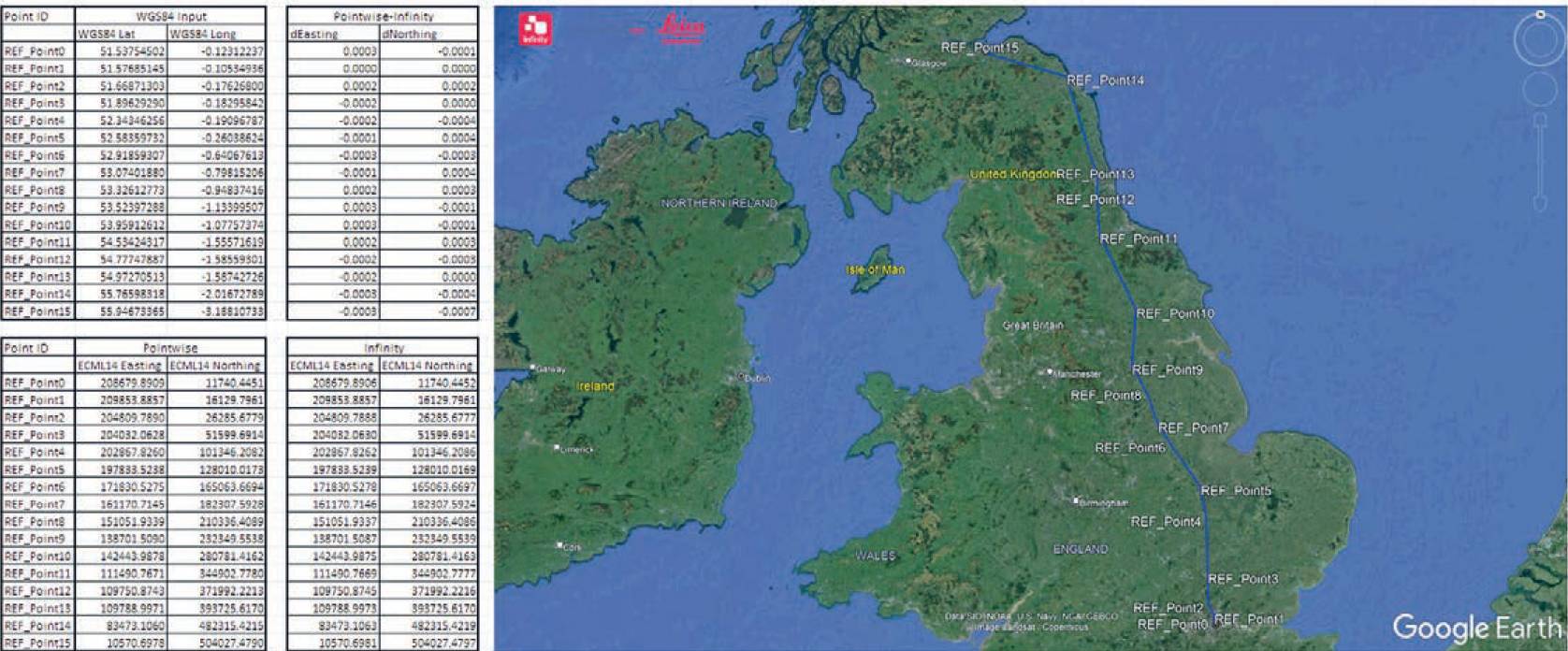
Figure 9: A sample of the data set taken from the conversion of the ECML 14 parameter file.
During the process we tested data sets to be sure that the conversion using the coordinate system methodology is correct. A sample of the data set taken from the conversion of the ECML14 parameter file can be seen in Figure 9. Test points were created in latitude and longitude at all the major stations along the route between London Kings Cross and Edinburgh Waverley.
The results show that along the 600km-plus route of the East Coast Mainline there is a consistency of results between the SnakeGrid Pointwise convertor and the Leica coordinate system methods of conversion. The largest difference being 0.7mm.
Working with OS levels within a SnakeGrid coordinate System
SnakeGrid is a 2D system concentrating on the conversion of latitude and longitude into grid eastings and northings. As the grid system is not on a similar easting and northing value as the Ordnance Survey National Grid, this causes an issue working in 3D. The OSGM15 geoid model reports the geoid to ellipsoid separation by referencing the height shift value on the projected grid coordinate.
Once the projection has been established a comparison between the projected coordinates and the same points being transformed using the SnakeGrid Pointwise application is used to calculate an easting and northing shift value for each coordinate grid square.Therefore, to publish a set of SnakeGrid coordinates in 3D referencing the OS Newlyn Datum height, there is a requirement to generate two sets of data and merge the required values together into a single file.
To overcome this, Leica Geosystems has worked with Ordnance Survey Great Britain to produce a geoid model that references the height shift value by latitude and longitude at a 15” spacing. The height shift is applied independently of the projection on the local grid system.
This now means that all SnakeGrid coordinate systems can be reported in 3D live in the field to the OS Newlyn Datum. This has an added benefit of the geoid model being able to be applied to any custom-made localised coordinate system in Great Britain regardless of what the eastings and northings values are, for example 1000.000, 5000.000.
Leica Geosystems has converted a number of SnakeGrid parameter files into the coordinate system format that are held within an online library. As more are converted then they will be added to this library. If you have a requirement to utilise SnakeGrid on your project, check this location first. If it is not available, then contact Leica Geosystems for advice on how to access these files via a conversion.
Chris Gibbons, Geomatics and Monitoring, Leica Geosystems
christopher.gibbons@leica-geosystems.com
Acknowledgments
Dr Jonathan Iliffe, UCLB
Mark Greaves, Ordnance Survey